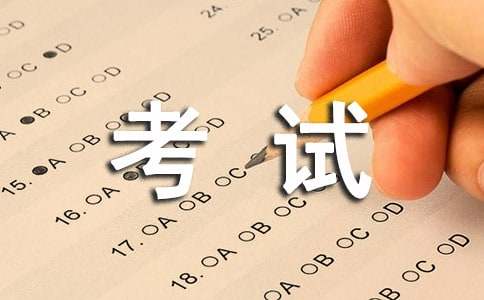- 相关推荐
2006年职称英语考试理工类C级试题答案(2)
第3部分:概括大意与完成句子(第23~30题,每 题1分,共8分)下面的短文后有2项测试任务:(1)第23~26题要求从所给的6个选项中为第2~5段每段1选择个最佳标题;(2)第27~30题要求从所给的6个选项中为每个句子确定1个最佳选项。

Teach Your Child Science
1 It is important to make your child interested in science from an early age. Most young children ask a lot of questions and you should give careful scientific answers. Don#39;t only give facts, but try to give explanations as well.
2 Science is not just knowledge; it is a way of thinking, a method of finding out about the world. We see something. We try to explain it, and we test our idea by setting up an experiment. One day you come home and find the plant on the table has fallen over. You think it might be the wind from the open window or the cat, so you close the window, but leave the cat in and see what happens (you can also try leaving the window open and shutting the cat out)。 Of course, you remember there may be a third explanation.
3 Ask your child to get a piece of string, some salt, a glass of water and an ice cube (冰块)。 Tell her to put the ice in the water, and then put one end of the string on the ice, leaving the other end over the side of the glass. Put a little salt on the ice. Wait a minute, and then pull the string; it should be attached to the ice. Ask the child: “what has happened?”
4 Probably she won#39;t know. Ask her whether fresh water or salt water freezes into ice first. If you live near the sea and have a cold winter, she should know fresh water freezes first as she will have seen that happen. Show her how to test the idea by half-filling two paper cups with water, adding salt to one. Then put them in the icebox and check every three minutes. Write the results in a table. The conclusion will be that salt changes the behaviour of water. #39;Thinking about the string, we see the salt turned some of the ice into water. Then the salt went away into the water and the ice froze again leaving the string attached.
5 Then you can ask, “Will water with salt boil at the same temperature as water without salt?” She can think, tell you her idea and (taking care because of the heat) you can test it in the kitchen.
23 Paragraph 1 .
24 Paragraph 2 .
25 Paragraph 3 .
26 Paragraph 4 .
A.What exactly is science?
B.How do you find an explanation?
C.What topics do you need?
D.How do you answer your child#39;s questions?
E.Where does your child study science?
F.How do you set up the experiment on salt and water?
27 When your child asks you questions, you should give her 。
28 We set up experiments to test our ideas about 。
29 In the experiment, one end of the string was attached to 。
30 The experiment shows that salt changes the behaviour of 。
A.the icebox
B.the ice
C.scientific answers
D.the experiment
E.the world
F.water
第4部分:阅读理解(第31~45题,每题3分,共45分)
下面有3篇短文后有5道题。请根据短文内容,为每题定1个最佳选项。
The Clock That Wake You When You Are Ready
Are you a real grump (脾气坏的人) in the mornings? Do you wake up every day feeling tired, angry and upset, and all too ready to flit the snooze (瞌睡) button? If so, then a new alarm clock could be just for you.
The clock, called SleepSmart, measures your sleep cycle, and waits for you to be in your lightest phase of sleep before waking you up, Its makers say that should ensure you wake up feeling refreshed (恢复精力) every morning.
As you sleep you pass through a sequence of sleep states - light sleep, deep sleep and REM sleep (快速眼动睡眼) - that repeats approximately every 90 minutes. The points in that cycle at which you wake can affect how you feel later, and may even have a greater impact than how long or little you have slept. Being wakened during a light phase means you are more likely to wake up cheerful and full of life and interest.
SleepSmart records the distinct pattern of brain waves produced during each phase of sleep, via a headband equipped with electrodes (电极) and a microprocessor. This measures electric activity of the wearer#39;s brain, and communicates wirelessly with a clock unit near the bed. You program the clock with the latest time at which you want to be wakened, and it then at the proper time wakes you during the last light sleep phase before that.
The concept was invented by a group of students at Brown University in Rhode
Island after a friend complained of waking up tired and performing poorly on a test. “As sleep-deprived (剥夺) people ourselves, we started thinking of what to do about it,” says Eric Shashoua, a recent college graduate and now chief executive officer of Axon Sleep Research Laboratories, a company created by the students to develop their idea. They have almost finished a prototype and plan to market the product by next year.
31 SleepSmart is a clock that
A.enables you to go to sleep.
B.enables you to sleep deeply.
C.enables you to get up early.
D.wakes you up during your last light sleep phase
32 As you sleep, the headband
A.analyses your sleep cycle every 90 minutes.
B.records the time when you fall into deep sleep.
C.communicates wirelessly with a computer,
D.measures the electric activity of your brain.
33 What should the sleeper do to make the device work?
A.He should press the snooze button in time,
B.He should turn on the microprocessor in the clock.
C.He should set the latest time for waking up.
D.He should adjust his headband.
34 The idea of making such a clock was developed by a group of
A.students at Brown University.
B.teachers at Brown University.
C.sleep-deprived scientists.
D.former engineers at Axon Sleep Research Laboratories.
35 The word “prototype” (paragraph 5) means
A.“form”。
B.“model”。
C.“brand”。
D.“cycle”。
【职称英语考试理工类C级试题答案(2)】相关文章:
职称英语理工类B真题及答案10-25
c语言读书笔记03-23
小学四年级英语考试卷03-27
c++课程设计实践报告08-10
英语考试总结与反思范文(通用13篇)05-17
关于英语考试后家长评语160句10-08
托福英语考试常用转承衔接词03-17
职称自我鉴定06-18
同等学力英语考试作文(通用17篇)07-06
论文评语大全(2)03-27